What is exorcism from the point of view of religion and science and how dangerous is it
Cases of the introduction of otherworldly beings into a person were known for a long time, even in the pre-Christian era. At the same time, there were practices of getting rid of this person. What is exorcism from the point of view of religion and science and how effective is it?

Before defining what an exorcism is, it is worth telling why it arose. All religions recognize the existence of evil spirits — demons and demons that penetrate into a person's body and force him to commit God-abominable acts. Demons inspire a person with hatred, anger, despondency, thoughts of suicide, etc. There are demons that cause convulsions, tics, convulsive seizures, a desire to blaspheme.
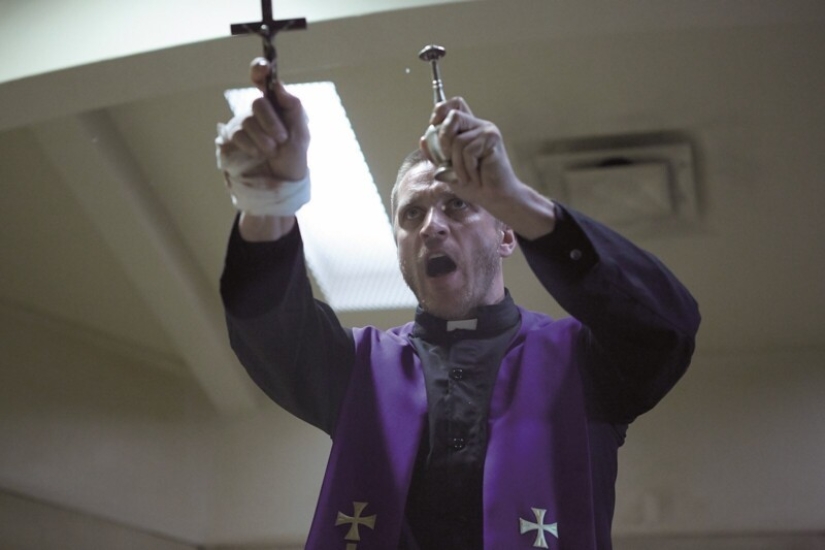
They learned to cast out the devil with the help of spells and prayers even in pre-Christian times. But the heyday of such rituals falls on the Middle Ages. At that time, it was customary in religion to talk about the devil's machinations and the possibility of introducing the devil into the human body. Lines from the Bible and other religious books were read out, where such cases were told in bright colors.
Impressionable religious people literally absorbed the information, which led to the development of obsession. The possessed person believed that the devil had possessed him and was forcing him to do and say unacceptable things. The most unpleasant thing was that the devil could capture many people at the same time, causing real epidemics.
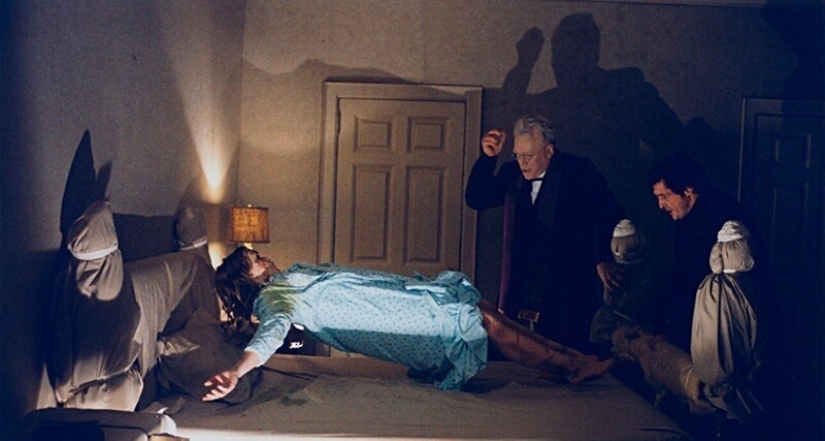
Especially often, epidemics spread in women's monasteries, nuns were "infected" from each other, became insane. If such an epidemic was tried to be treated en masse, using prayers, then this led to its even greater spread. This contributed to the emergence of special rites of individual exorcism, called exorcism.
According to the description of eyewitnesses, the possessed are disgusted with the Holy Gifts, the Holy Trinity, the Virgin Mary. They are afraid of holy water, they spit, call names, grimace, without feeling fear or regret. Periodically, they begin to have attacks of the strongest anger with convulsions that last for several hours in a row.
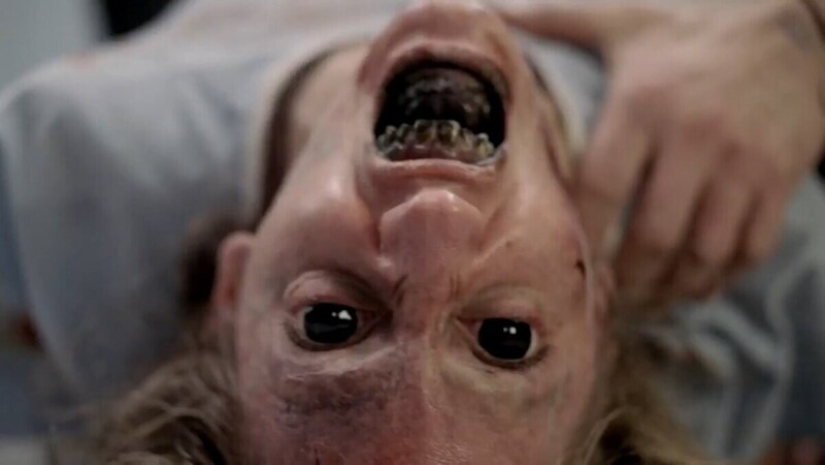
At the same time, the possessed person becomes extremely strong. An obsessive woman can cope with a strong man and not even with one.
Epidemics of obsession literally captured the Middle Ages. So, in a Madrid monastery, the epidemic began with the appearance of an obsession in one of the nuns. She had convulsive seizures, foaming at the mouth appeared. She moaned, barked, cursed the Lord and shouted that the unclean spirit of Peregrino had taken possession of her.
The obsession quickly spread to other nuns. They suffered for days, believing that they were possessed by Peregrino's friends. The influence of prayer did not help, and then the Inquisition exiled the possessed to remote monasteries, which allowed to stop the epidemic of possession. There were cases when priests were accused of casting devilish spells.
Their fate was unenviable: some were burned at the stake, despite confessing to all their sins after being tortured in the inquisition, others who did not confess suffered the same fate.
At first, during the epidemics of obsession, the clergy tried to influence the crowd by reading prayers.
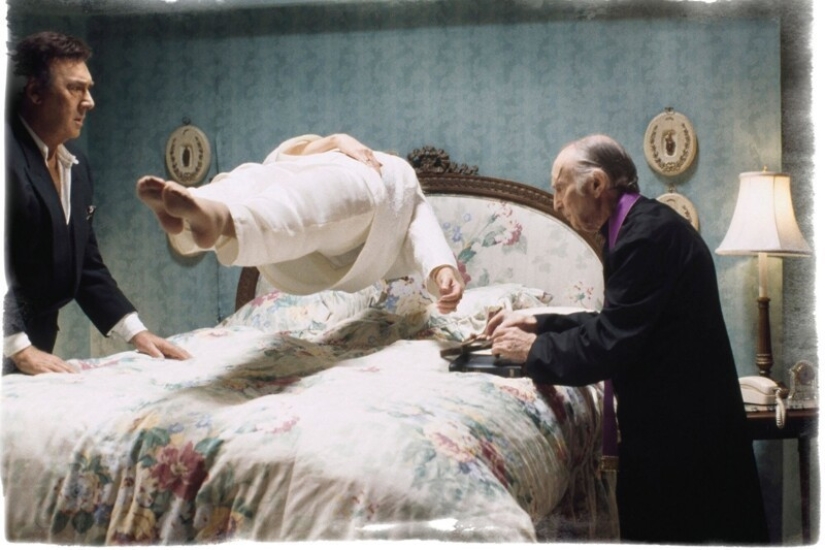
But this often had the opposite effect: the "infection" covered all new masses of people. The only way to stop the epidemic was to quickly isolate the possessed and conduct individual rites of exorcism with them.
The rite of exorcism is still carried out today in accordance with religious guidelines. Only a specially trained clergyman can conduct it. Of great importance is his own faith, conviction in the correctness of his actions and the ability to transmit this conviction to others.
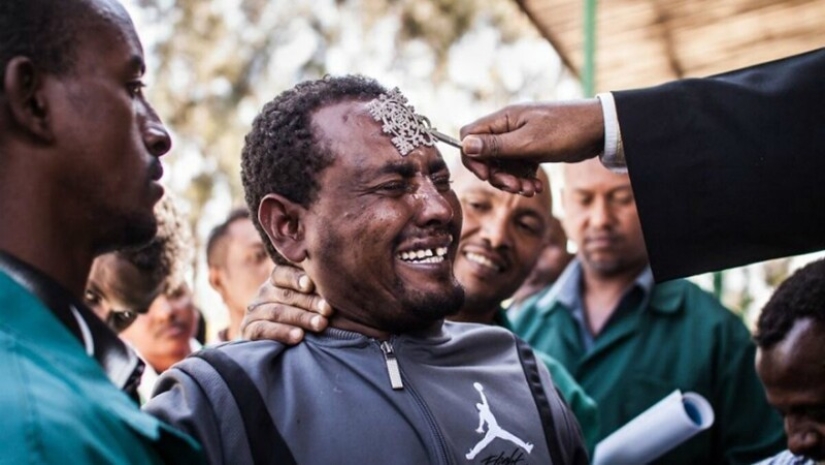
The identity of the priest conducting the rite is of great importance. So, there is information that Pope John Paul II removed the signs of obsession from a young girl with a touch of his hand and a blessing.
Nowadays, the rite of exorcism is necessarily preceded by a consultation with a psychiatrist, since the symptoms of possession can be similar to the symptoms of a mental illness. It is impossible to cure a mentally ill person (for example, with schizophrenia) by exorcising evil spirits.
In addition to the exorcist, one more person must be present during the ritual — an observer. It is better if the witness is a physically strong person, since the possessed can show superhuman strength at certain moments of time. Both the priest and the observer must undergo purification in the form of fasting and confession before performing the ritual.
For the rite, the patient is placed in a separate isolated room with a minimum amount of furniture. He is fixed in bed and the exorcist priest begins the ritual, which includes:
The evil spirit often willingly calls his name and begins to mock the exorcist, insult him and the Lord, spit, etc.
But the exorcist insists that the demon must leave the body. With the correct conduct of the rite by an experienced clergyman, the evil spirit goes away and the possessed person feels relieved. The fact that famous exorcists warned: it is necessary not just to exorcise demons and purify the soul. It is important to settle the Lord in your soul. Only in this case, the demons will not be able to return again.
All religions have rites of exorcism. The most famous are, of course, the Catholic rites. Exorcists are trained at Catholic universities, where they study not only religious subjects, but also the basics of psychiatry. The rite of exorcism in Catholicism is strictly regulated. Interest in such rites has not only not dried up, but, on the contrary, has been increasing in recent years.

In Orthodoxy, obsession is known under the names of demoniacality and klikushestvo. Over such people, the rite of proofreading with prayers was carried out. This is usually done by a priest who has the experience and spiritual strength to conduct such rites. In Islam, Judaism, Hinduism, and Buddhism, there are also similar rituals.
It is interesting that the ritual of exorcising evil spirits is carried out in Buddhism. At first, a Buddhist monk tries to take the spirit out of the body peacefully, persuading him to leave the body. If this cannot be done, then they resort to the help of special rituals with mantras-spells. The evil spirit that has left the body is enclosed in a closed box and burned.
Psychiatry believes that a properly performed exorcism ritual really helps, but provided that the person does not have a mental illness.
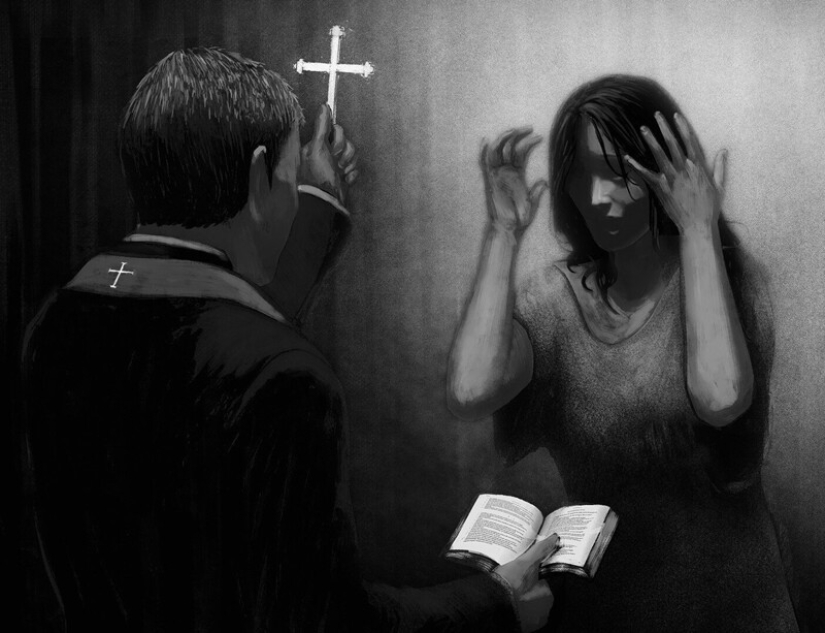
For example, with a disease such as schizophrenia, a person hears voices in his head. These voices can tell, order, and even punish a person in various ways. For a believer, these voices may "belong" to demons. It is impossible to rid such a person of demons with the help of religious rituals.
But most of the possessed are healthy, but very suggestible people. Most often, these are women with hysterical personality traits, prone to demonstrative behavior and easily amenable to suggestion. In the past, such people were influenced by religion and were most afraid of evil spirits.
If such a fertile ground was overlaid with bright sermons of the clergy about demons and demons that capture the body and soul, they acquired the properties of suggestion in reality, the person developed corresponding beliefs, illusions and hallucinations, then turning into persistent delirium. That is, a hysterical neurosis develops.
The mechanism of suggestions in reality was well described by the outstanding Russian psychiatrist V. M. Bekhterev in the book "Suggestion and its role in public life". According to modern concepts, the human psyche consists of:
But the consciousness, like an older brother, does not allow unverified information to penetrate into the subconscious.
In order to enter information into the subconscious, you need to distract the consciousness. This is exactly what happened at the time of long sermons and prayers: the consciousness was dulled and frightening information about demonic entities was introduced at the subconscious level. Of course, all this was done unconsciously, but it gave rise to the development of obsession.
The rite of exorcism is carried out according to the same principle: the consciousness is put to sleep by a long reading of the prayer, and then the command of exorcism is abruptly introduced into the subconscious.
Fixing the session in the form of an appeal of the healed person to the Lord is also legitimate from the point of view of psychiatry: the removal of such significant information from the mental sphere creates a void in which, according to the definition of the clergy, new seven demons can settle (for example, the demon of despondency, anger, avarice, etc.).
Many myths have been created around exorcism, which are sometimes impossible to distinguish from reality.
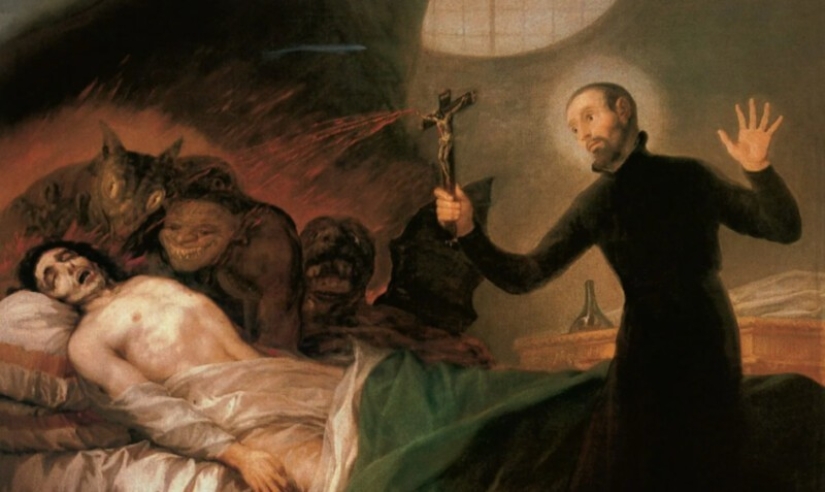
The first cases of exorcism of evil spirits were described in Sumerian texts for 2000 years BC. Ancient healers exorcised evil spirits with the help of conspiracies. The ritual of exorcising evil spirits did not always take place peacefully. For example:
The exorcism ritual was strictly regulated by the Vatican in 1614. It is conducted by specially trained clergymen with the reading of prayers in Latin. Of the famous people, the ritual of exorcism was subjected to:
Famous exorcists: in Catholicism — Father Gabriel Amorth (Vatican); in Orthodoxy-Archimandrite Herman (Holy Trinity Sergius Lavra). Currently, there is an increase in interest in exorcism and the number of people who want to undergo this ritual all over the world. The training of modern Catholic exorcists is carried out in The Pontifical Academy "Queen of the Apostles" in Italy.
An exorcism session properly conducted by an experienced trained clergyman will not bring harm. In most cases, it will contribute to the recovery or relief of the condition of the possessed. The damage will be caused if:
There were many such examples not only in the Middle Ages, but also in our time: in 2010, a teenager was killed by water during an exorcism ceremony conducted by relatives independently.
There were especially many fictions associated with obsession in the Middle Ages. This caused terror among believers and prepared fertile ground for the outbreak of mental epidemics of obsession. Most of them ended tragically.
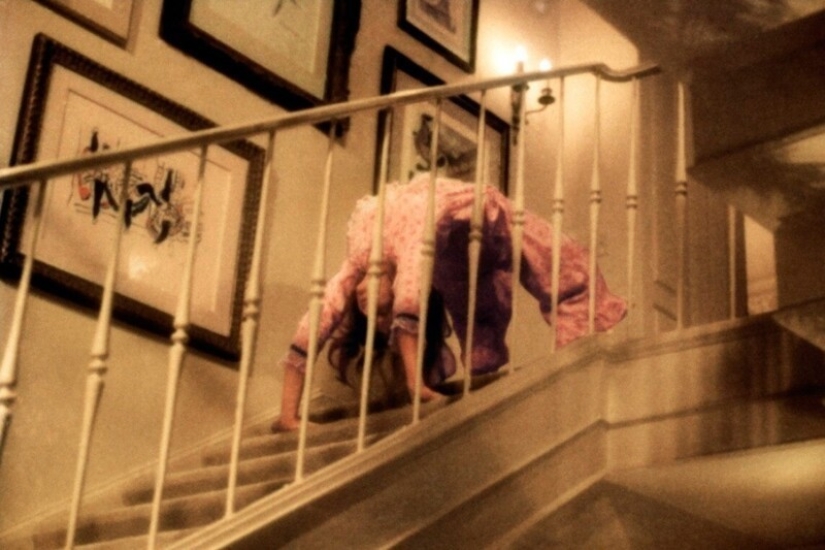
An example of how autosuggestion and fiction turns into a persistent conviction can be the case of the development of demonic possession in two French Ursuline nuns in 1610. They had unusual movements and some other signs by which they were recognized as possessed. Apparently, one of them suffered from mental illness, the second was very suggestible.
A mentally ill nun said that a local priest had cast a spell on her. The second nun confirmed this. Despite the fact that this priest had an excellent reputation, the Inquisition took care of him. As a result, under torture, he admitted that he had had intercourse with the devil and that he had infected thousands of women with the poisonous devil's breath.
Despite the self-incrimination and confession of guilt, the priest was burned at the stake. And the possessed nuns were isolated, they conducted sessions of exorcism, which led to the recovery of one of them.
When it comes to what exorcism is and whether it has a place in modern life, religion and psychiatry are united in their opinion: if there is faith in God and the existence of demons, a properly conducted exorcism rite will undoubtedly benefit. But only a specially trained clergyman should conduct it.
Keywords: Faith | The devil | Danger | Exorcism
Post News ArticleRecent articles

It is well known that a person sleeps a third of his life. It is not surprising that so many customs are associated with sleep. ...

Even in the middle of the XX century, when people came close to solving the mystery of the atom and was looking for ways to reach ...
Related articles

It is easy to imagine how dangerous was the percentage of feminists in Muslim Central Asia two centuries ago. However, even then, ...

Children often pick up all sorts of little things on the street: toys, coins, beautiful leaves. But parents usually swore, ...

Bottled water is in great demand all over the world. Its sales are growing by an average of 10% per year and by the next 2020, the ...

A year before Madonna first appeared on television and confidently told American Bandstand host Dick Clark that she was going to ...